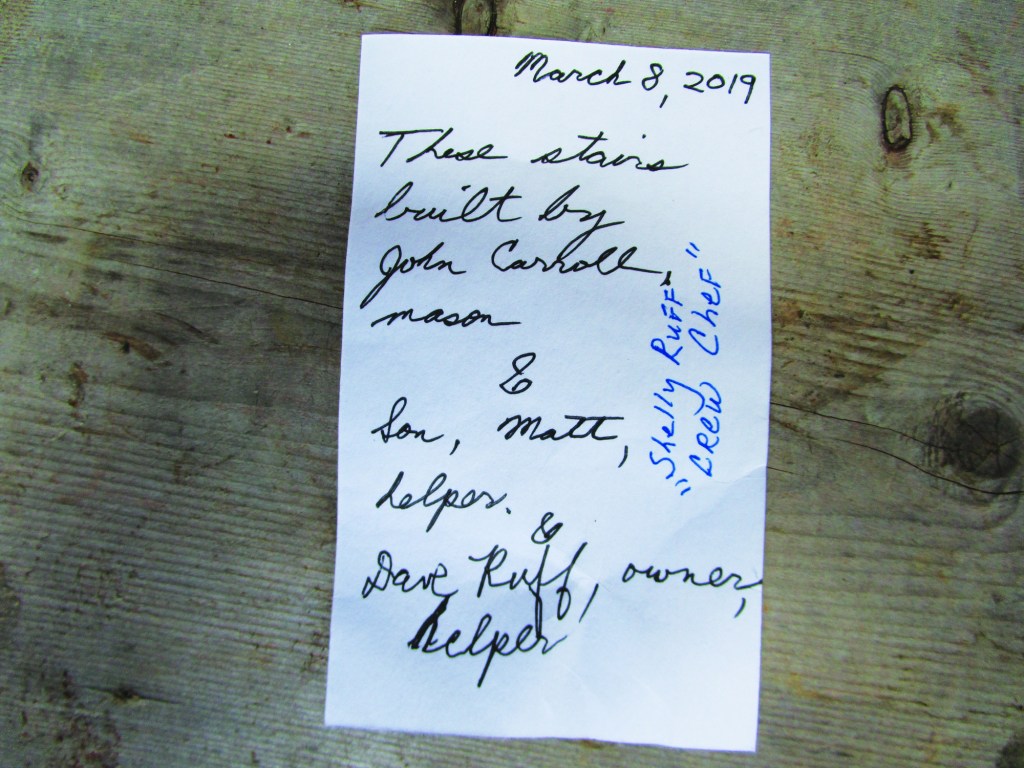In November 1987, I was hired to take out an ancient and unsafe fireplace in a Hampton, N.H., home, and then build a new hearth and enclosure for a cast-iron wood-burning stove. As I removed the brick in the old hearth, I was surprised to find that the hearth was supported by a wide board (nowadays we use plywood) rather than by the more typical masonry base. But the biggest surprise was yet to come.
While brushing away the chips and dust, I discovered that the board supporting the hearth was signed and dated. In cursive that looked fancy and old-fashioned, the inscription read “May 4, 1860, R. Rollins, H. Rollins.”
After carefully removing the board and giving it to the homeowners, I decided to write my own name along with the homeowners’ names and the date in the wet concrete I poured above the fireplace nook. Since then, I have often left notes inside the structures of my jobs in the hope that someday far in the future someone will find them and be as thrilled as I was that November day.
Although I’ve occasionally written quick notes right on some part of the structures that I’ve built, I prefer putting together a time capsule. I always date the message, sign it, and invite members of the crew as well as the homeowners to sign it as well (1). For the capsule, I use clear plastic containers with tight-fitting lids (2). I figure the clear plastic will show the message and be less likely to be thrown away when a crew demolishes my work way in the future. I also select a location where the capsule is likely to stay dry and survive as long as the structure.

He seals the note in a clear plastic container along with some coins and seals it into the structure
I sometimes give additional information, such as how long the job took and how much it cost. I always put in a handful of coins and sometimes include a statement to the effect that the finder of the capsule is entitled to the coins. I doubt that my unofficial bequest would hold up in court, but it can’t hurt!
Earlier this year, I built a brick staircase (featured in the article “Layout for a Brick Staircase,” Jun/19) and decided to leave one of my capsules. During construction, I wrote a note with the date and the names of the crew. I also had the owner, Dave Ruff, and his wife, Shelly, sign it. Before adding the usual handful of coins and setting the capsule in the structure, I took a picture of the note, and noticed that Shelly had also put a cross in the container as a statement of her faith to some unknown worker far in the future.
